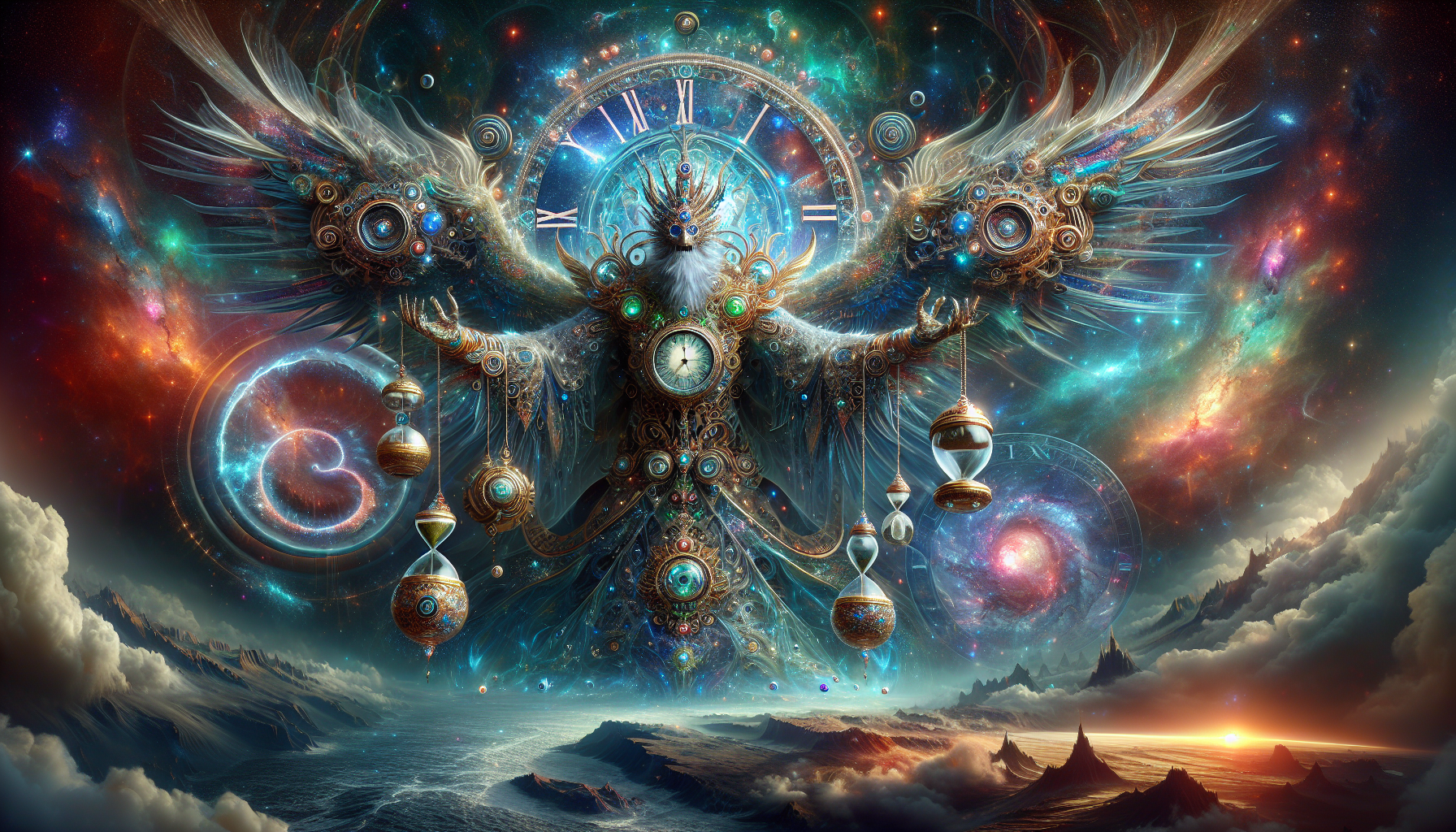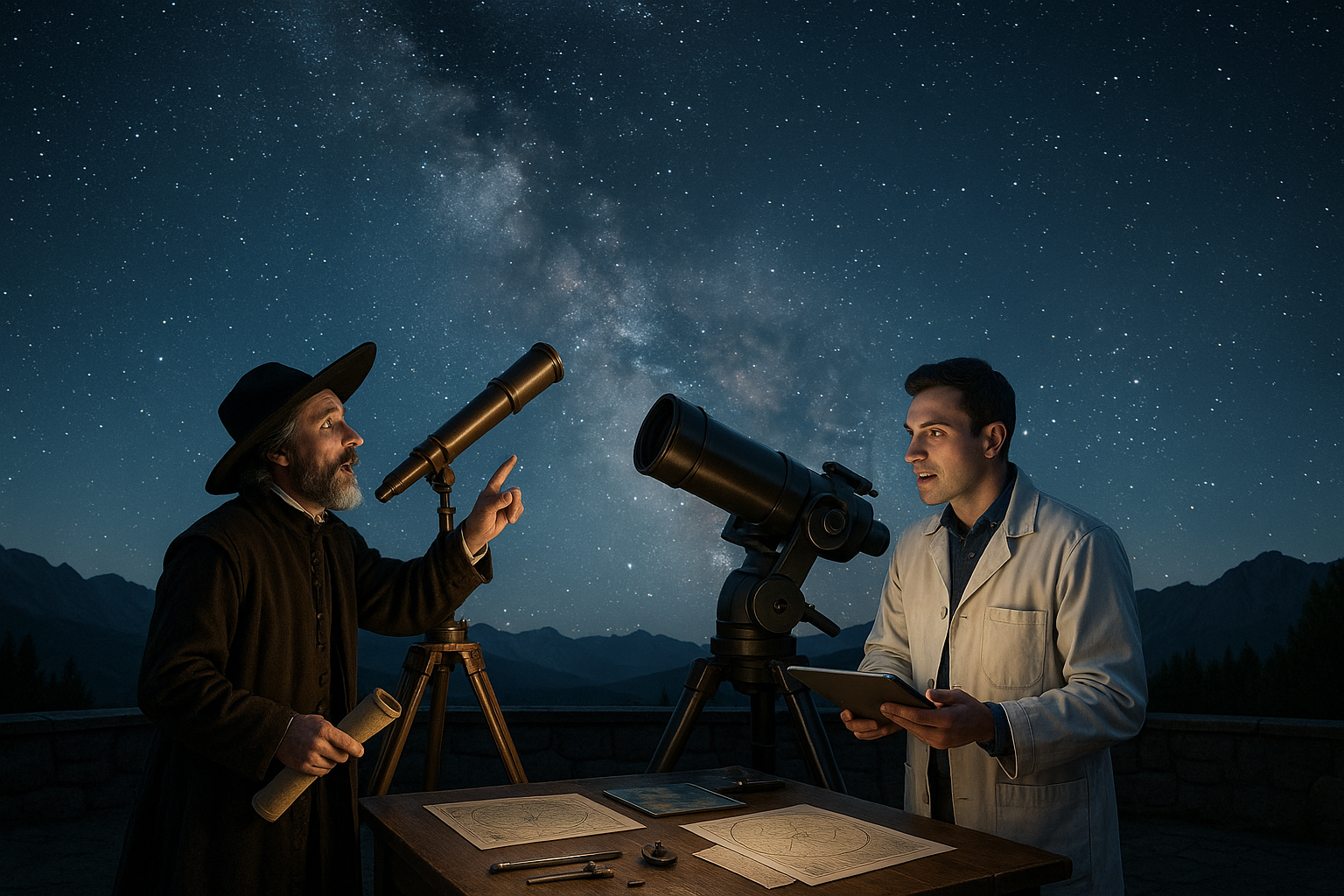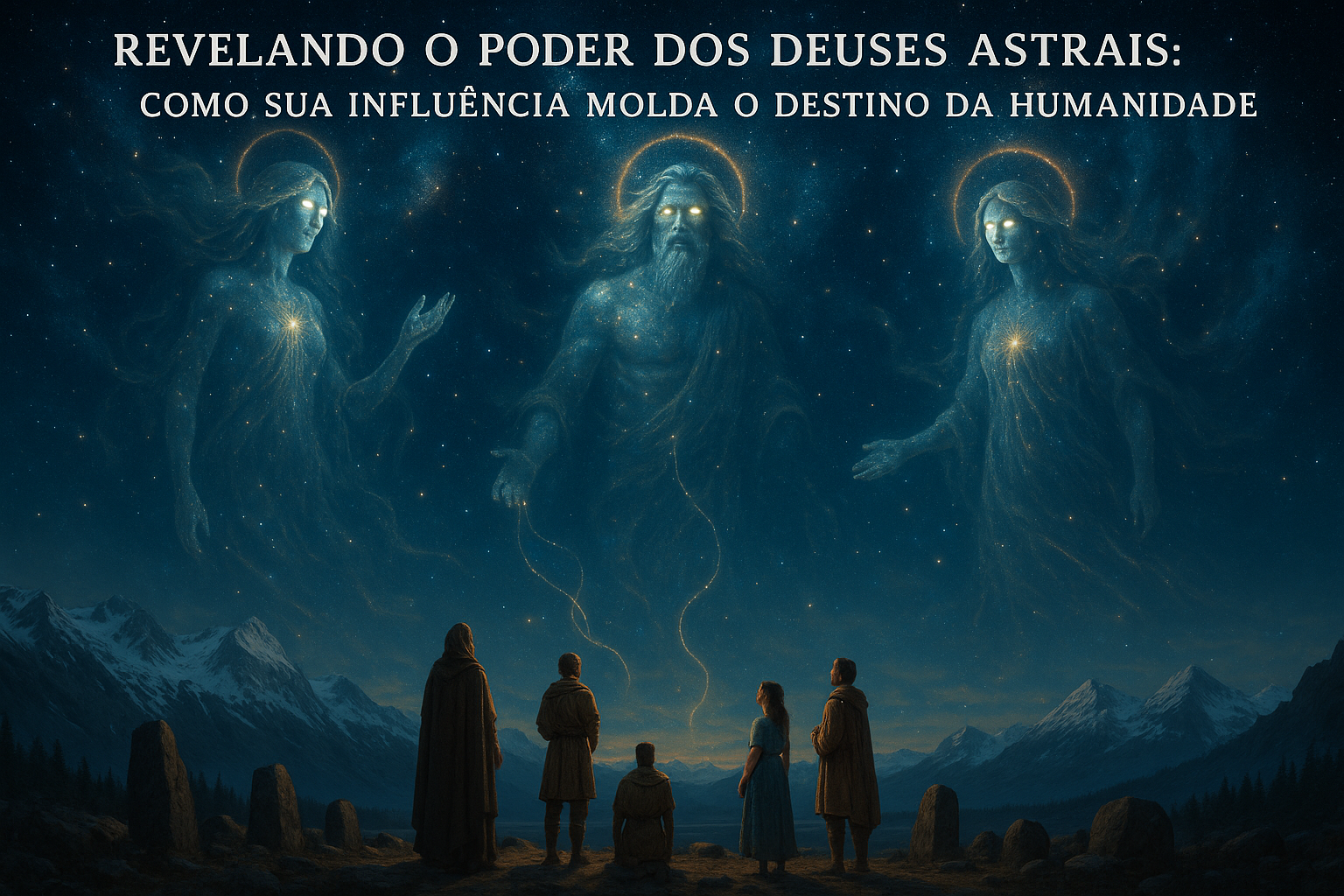In the vast tapestry of the cosmos, where stars dance in an eternal ballet and galaxies swirl like celestial whirlpools, there exists a world that captivates the imagination and whispers to the soul: the enigmatic realm of Celestial Timekeepers. These mythical guardians of time and space, often shrouded in mystery and wonder, invite us to embark on a journey that transcends the boundaries of reality and ventures into the heart of ancient lore and cosmic phenomena. As we delve into this fascinating subject, we will uncover the legends, the science, and the awe-inspiring beauty of these timeless sentinels that have captured human curiosity for millennia. ✨
Imagine standing on the precipice of time itself, where moments stretch into eternity and the past, present, and future converge into a singular point of cosmic significance. This is the realm inhabited by the Celestial Timekeepers—beings or forces believed to orchestrate the symphony of the universe, maintaining the delicate balance between order and chaos. From the ancient myths of Chronos and the celestial mechanics of horology to the modern interpretations found in literature and art, these guardians serve as both metaphor and mystery, guiding us through the ebb and flow of time’s river. In this exploration, we will navigate through the rich tapestry of stories that span cultures and eras, revealing how these figures continue to influence our understanding of time, destiny, and the very fabric of existence.
As we journey deeper into this captivating world, we will explore the symbolic significance of celestial events and their impact on human consciousness. We will unravel the threads connecting astrology, astronomy, and mythology, examining how ancient civilizations perceived time as a living entity governed by cosmic forces. Furthermore, we will consider the modern scientific perspectives on time and space, highlighting how contemporary discoveries echo the ancient wisdom that has long recognized the universe’s rhythmic pulse. By the end of this exploration, you will have traversed the corridors of time and space, gaining a profound appreciation for the mythical guardians who, though invisible to the eye, hold the universe in their timeless embrace. Prepare to be enchanted, for the journey into the world of Celestial Timekeepers is one of wonder, discovery, and cosmic revelation. 🌌
The Mystical Realm of Celestial Timekeepers
In the vast expanse of the cosmos, celestial timekeepers have been a source of fascination and intrigue. These mythical guardians of time and space are often depicted in ancient mythologies as divine beings who govern the passage of time, the movements of the stars, and the intricate balance of the universe. As humanity has looked to the heavens for guidance and understanding, celestial timekeepers have inspired countless stories, rituals, and traditions, weaving their way into the cultural fabric of societies across the globe.
Celestial timekeepers are not just figments of mythological imagination but are often rooted in early astronomical observations. Ancient civilizations meticulously studied the sky, observing the cycles of celestial bodies, and linked these observations to natural phenomena on Earth. As a result, the concept of timekeepers emerged, representing both the physical motion of celestial entities and their symbolic roles as arbiters of destiny. These timekeepers have been depicted in various forms, from deities and spirits to cosmic clocks, each with unique attributes and narratives that reflect the cultures from which they originate.
To explore the enchanting world of celestial timekeepers, it is essential to delve into the diverse mythologies and cultures that have shaped our understanding of these enigmatic beings. From the Aztec god of time, Tonatiuh, to the ancient Greek Titan, Chronos, each culture provides a distinct lens through which we can view the intersection of time, space, and divinity. Let’s embark on a journey through time and space to unravel the mysteries and magic of these mythical guardians.
The Role of Celestial Timekeepers in Ancient Mythologies
Throughout history, celestial timekeepers have played pivotal roles in mythologies across the world. In ancient Egypt, the god Thoth was revered as the master of time, wisdom, and the moon. Often depicted with the head of an ibis, Thoth was believed to be the divine scribe who recorded the passage of time and maintained the cosmic order. Similarly, in Mesopotamian mythology, the god Nanna, also known as Sin, governed the lunar cycle and was associated with the measurement of time and the agricultural calendar.
The influence of celestial timekeepers extended beyond religious contexts, as they were integral to the development of early calendars and astronomical systems. The ancient Maya civilization, for example, created an intricate calendar system based on the cycles of celestial bodies, including the moon and Venus. Their understanding of time was deeply intertwined with their cosmology and religious beliefs, with timekeepers like the god Kukulkan, a feathered serpent deity, playing a crucial role in the regulation of time and space.
In Hindu mythology, Kala, the god of time, is both creator and destroyer, representing the cyclical nature of the universe. The concept of cyclical time is central to Hindu philosophy, where time is divided into vast epochs known as Yugas, each governed by divine timekeepers. This cyclical perception of time contrasts with the linear view prevalent in Western cultures and highlights the diverse ways in which celestial timekeepers have been conceptualized.
Celestial Timekeepers in Modern Culture and Science
While the myths of celestial timekeepers are rooted in ancient traditions, their influence persists in modern culture and science. Today, we continue to look to the heavens for timekeeping, relying on atomic clocks and astronomical observations to maintain precise measurements of time. The synchronization of time on a global scale is essential for various technological systems, including navigation, telecommunications, and internet infrastructure.
The role of celestial timekeepers has also permeated popular culture, inspiring works of fiction, art, and music. Films like “Interstellar” explore the concept of time dilation and the impact of celestial phenomena on human perception of time. Similarly, literature and visual arts often draw on the imagery of timekeepers, using them as metaphors for themes of destiny, change, and the passage of time. This cultural fascination with celestial timekeepers reflects humanity’s enduring quest to understand the nature of time and its relationship with the cosmos.
In the realm of science, the study of celestial timekeepers has contributed to advancements in our understanding of the universe. The observation of pulsars, for instance, has provided insights into the nature of time and space. These rotating neutron stars emit regular pulses of radiation, serving as natural cosmic clocks that can be used to study gravitational waves and test theories of general relativity. As we continue to explore the cosmos, the legacy of celestial timekeepers remains a guiding force in our pursuit of knowledge and discovery.
The Future of Celestial Timekeepers
As our understanding of the universe evolves, so too does our conception of celestial timekeepers. Emerging technologies, such as quantum computing and space exploration, have the potential to redefine how we measure and perceive time. The search for extraterrestrial life and the study of distant galaxies challenge our traditional notions of time and space, prompting us to reconsider the role of celestial timekeepers in a rapidly changing world.
The integration of celestial timekeepers into emerging scientific paradigms opens new avenues for exploration and innovation. As we continue to unravel the mysteries of the cosmos, the mythical guardians of time and space remain a powerful symbol of humanity’s quest for knowledge and understanding. By bridging the gap between ancient mythology and modern science, celestial timekeepers inspire us to look beyond the confines of our earthly existence and embrace the infinite possibilities of the universe.
Table of Celestial Timekeepers Across Cultures
To better understand the diversity and significance of celestial timekeepers, let’s examine a comparative table highlighting some of the most notable figures from various cultures.
| Culture | Timekeeper | Description |
|---|---|---|
| Ancient Egypt | Thoth | God of wisdom and time, often depicted with the head of an ibis. |
| Maya | Kukulkan | Feathered serpent deity, associated with the regulation of time and space. |
| Hindu | Kala | God of time, representing both creation and destruction. |
| Mesopotamia | Nanna/Sin | Lunar deity governing the measurement of time and the calendar. |
For a deeper dive into the fascinating world of celestial timekeepers, watch this insightful video that explores their mythological and scientific significance:
Exploring Celestial Timekeepers: Myths and Science (YouTube, Mythological Insights Channel)
- Discover the role of celestial timekeepers in ancient cultures and their influence on modern science.
- Learn how celestial timekeepers have inspired art, literature, and film.
- Explore the future of timekeeping technology and its impact on our understanding of the universe.
The enchanting world of celestial timekeepers continues to captivate our imagination and drive our pursuit of knowledge. As we look to the stars for answers, these mythical guardians of time and space remind us of the intricate and wondrous nature of the cosmos. 🌟

Conclusion
Unveiling the Enchanting World of Celestial Timekeepers: Exploring Mythical Guardians of Time and Space
As we draw to a close on our exploration of the celestial timekeepers, we find ourselves reflecting on the vast tapestry of myth and wonder that these mythical guardians weave. Throughout this journey, we have delved into the rich narratives that various cultures have spun around these enigmatic entities, each tale contributing to a collective understanding of how humanity perceives time and the cosmos.
Our exploration began with an examination of the origins and roles of celestial timekeepers in different mythologies. From the ancient Greeks, who envisioned Chronos as a personification of time, to the Mayans with their intricate calendar systems guided by celestial entities, we see a recurring theme: the deep human desire to understand and order the cosmos. Each myth presents a unique perspective, yet all echo a shared reverence for the mysteries of time and space.
We then ventured into the symbolic significance of these timekeepers. They are not mere representations of the passage of time but are often seen as protectors and regulators of cosmic balance. The Hindu deity Kala, for example, embodies both time and destruction, illustrating the cyclical nature of existence. Such narratives remind us of the perpetual dance between creation and dissolution, urging us to reflect on our place within this eternal rhythm.
Moreover, we explored the artistic and literary representations of celestial timekeepers, which have inspired countless works throughout history. From Renaissance paintings to contemporary science fiction, these guardians have captured the human imagination, serving as muses for creators seeking to explore the mysteries of time. Their depictions in art and literature not only highlight their aesthetic allure but also reinforce their cultural significance across eras and societies.
In modern times, the fascination with celestial timekeepers extends into scientific realms as well. Astronomers and physicists continue to unravel the complexities of time and space, often drawing inspiration from ancient myths and legends. The study of celestial mechanics, for instance, reflects a scientific pursuit that resonates with the mythic narratives of old, bridging the gap between ancient wisdom and contemporary understanding.
As we conclude this exploration, it is crucial to recognize the enduring importance of celestial timekeepers in our collective consciousness. These mythical guardians serve as reminders of the awe-inspiring vastness of the universe and our intrinsic connection to it. They invite us to ponder the nature of time, urging us to appreciate each moment while acknowledging the grand tapestry of existence that transcends our individual lives.
In an era where the pace of life often feels relentless, the stories of celestial timekeepers encourage us to pause, reflect, and embrace the mysteries that surround us. By understanding and appreciating these narratives, we gain insight into the human experience and our quest for meaning amidst the cosmic expanse.
As you leave this article, I encourage you to delve deeper into the myths and stories of celestial timekeepers. Share your thoughts and insights with others, sparking discussions that can lead to new perspectives and understandings. Whether through scholarly research, creative expression, or casual conversation, let us keep the legacy of these mythical guardians alive, allowing their stories to inspire future generations.
In conclusion, the enchanting world of celestial timekeepers invites us to embark on a journey of discovery, reflection, and wonder. May their timeless tales continue to illuminate our paths, guiding us through the ever-unfolding story of the cosmos. 🌌
Thank you for joining us on this exploration. Feel free to share your thoughts or share this article with others who might find it intriguing. Let us celebrate and preserve the rich tapestry of myths that connect us all, reminding us of the beauty and mystery that lie beyond the stars.
Toni Santos is a visual storyteller and cosmic interpreter whose work illuminates the ancient skywatchers and their prehistoric astronomy—the profound ways early humans observed and revered the heavens before written history. Through a visionary lens, Toni explores how the stars, planets, and celestial cycles shaped myth, ritual, and survival in cultures lost to time.
Rooted in a fascination with archaic observatories, stone alignments, and celestial symbolism, Toni’s creative journey reveals the deep human impulse to understand and harmonize with the cosmos. From lunar phases guiding planting seasons to the sacred paths of the Milky Way, each of his works embodies the awe and knowledge encoded in the night sky.
Combining artistic craftsmanship with archaeological insight, Toni’s pieces evoke the mystery and precision of prehistoric astronomers. His work does more than depict—it channels the timeless dance between earth and sky, bridging ancient wisdom with contemporary wonder.
As the visionary behind Vizovex, Toni shares curated visuals, essays, and symbolic studies that invite others to reconnect with the cosmic heritage written in stone and starlight. His creations are a call to look upward, to listen to the silent stories told by the stars, and to honor the first astronomers who mapped the heavens with reverence and ingenuity.
His work is a tribute to:
The celestial wisdom of prehistoric peoples
The sacred geometry of ancient observatories
The enduring bond between human culture and the cosmos
Whether you’re a stargazer, a scholar of ancient mysteries, or someone captivated by the universe’s earliest storytellers, Toni welcomes you to journey through a space where the sky is both map and myth—one constellation, one ritual, one revelation at a time.




